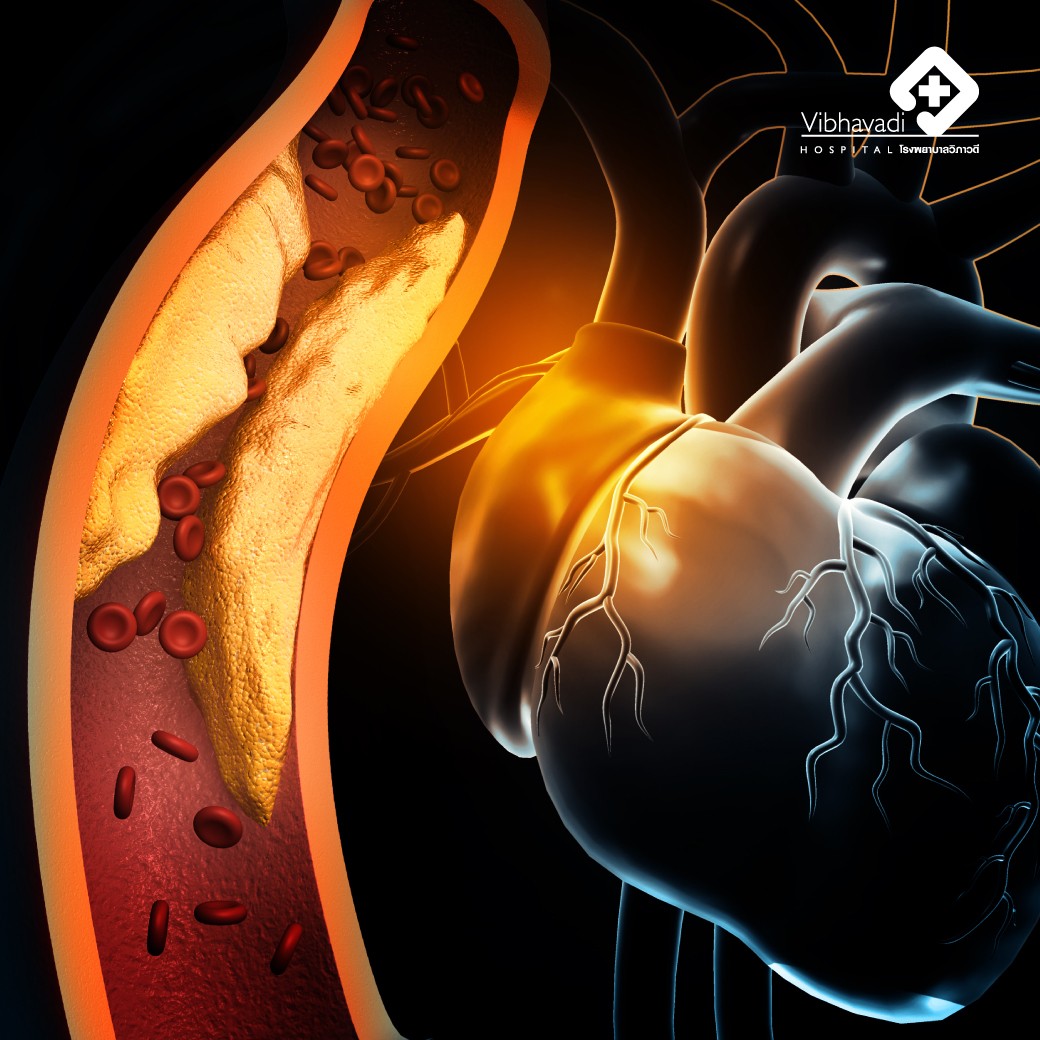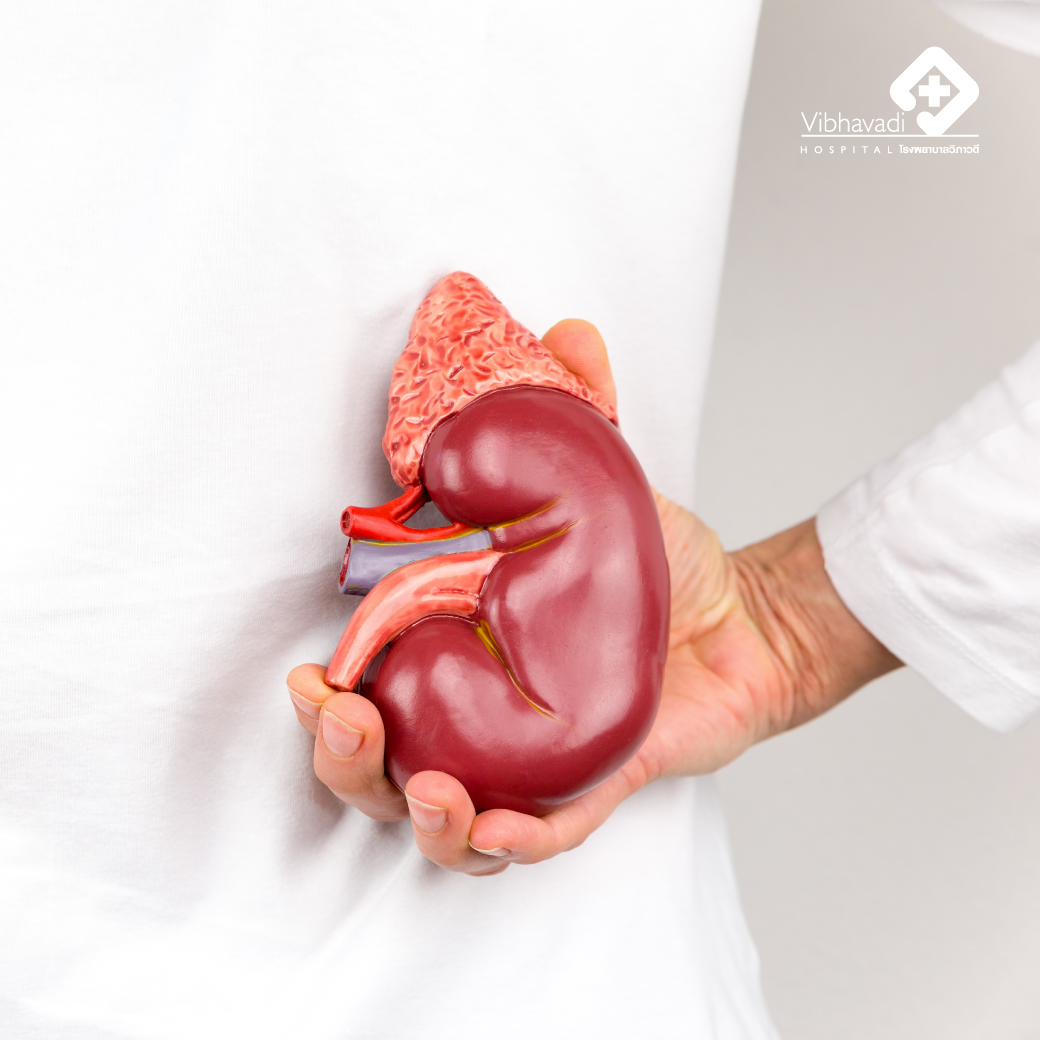Enlarged Heart Condition: What Is It, And What Are The Diagnostic And Treatment Approaches?
Enlarged Heart Condition: What Is It, And What Are The Diagnostic And Treatment Approaches?
Dr. Semchai Pho-Boon
Cardiologist at the Heart Center, Vibhavadi Hospital
Enlargement of the heart can be categorized into two major types.
- Enlargement due to thicker than normal muscle. Imagine someone who exercises intensively and builds up their muscles. Similarly, if the heart muscles are required to work harder, such as in cases of high blood pressure or valve leakage, the muscle of the heart may become thicker.
- Another cause is when the heart size increases because the heart muscle doesn't squeeze properly, resulting in blood pooling in the heart chambers like a water balloon, leading to enlargement.
There are several diseases that can cause heart enlargement, such as high blood pressure, valve leakage or regurgitation, coronary artery disease, heart failure, and diabetes, among others. Additionally, there are cases where the heart muscle thickens without a known cause.
Enlargement of the heart may not necessarily exhibit any abnormal symptoms. If symptoms do occur, they are usually related to the underlying disease or heart failure, such as easy fatigue, shortness of breath, or chest tightness. Physical examinations can indicate if the heart is significantly enlarged, but generally, these exams aim to identify the causes rather than measure the size of the heart. Essential tests include electrocardiography (ECG) and chest X-ray (including the heart and lungs). If the heart muscle is significantly thicker than normal or there has been a previous history of heart muscle problems, it can be detected through the ECG. However, ECG is a less sensitive test, which means that even if the ECG is normal, it does not guarantee that the heart is not enlarged or free from heart disease. Chest X-ray provides a good assessment of the heart size but can be prone to errors depending on technical factors such as the distance between the heart and the film and the patient's breathing. Therefore, it is common to rely on special examinations in many cases. This is done to gather as much information as possible to make an informed decision regarding diagnosis and treatment.
Diagnostic Approaches:
There is no single best method of examination without limitations. Currently, the most widely accepted method for assessing heart size is echocardiography, which uses high-frequency sound waves to create images. The ultrasound machine emits high-frequency sound waves that penetrate various organs. These sound waves reflect differently depending on the type of tissue they pass through, such as blood, bones, or muscles. These reflections are recorded by the computer and used to generate images of the organ being examined. Therefore, when the heart is examined, the chambers of the heart, the functioning of the valves, the heart muscle, and its ability to contract can be observed. This method provides more detailed information compared to other examinations. However, it does not visualize the coronary arteries and may have limited clarity in obese patients or those with lung diseases (except when examined via an esophageal tube). The individuals who should undergo this examination depend on the clinical situation, but it is generally performed when there is a suspicion of heart enlargement.
Individuals experiencing symptoms of heart failure, coronary artery disease, high blood pressure, or abnormalities in cardiac function should undergo this examination to assess the contractile ability of the cardiac muscles. Furthermore, individuals who are found to have an enlarged heart on X-ray should seek to have further diagnosis, to confirm any abnormalities; this depends on the discretion of the cardiologist. For patients who are at risk of coronary artery disease, such as diabetes, if an enlarged heart is detected from the X-ray, a thorough examination should be conducted as well. This is because enlarged hearts do not necessarily present symptoms that require treatment.
The treatment for an enlarged heart involves addressing the underlying causes, such as treating high blood pressure, performing cardiac valve surgery, or managing heart failure. Although treatment may not visibly reduce the size of the heart on an X-ray for some individuals, it helps prevent further enlargement over time.
For additional information, please contact the Heart Center at Vibhavadi Hospital, at 0-2561-1111, ext 1.















